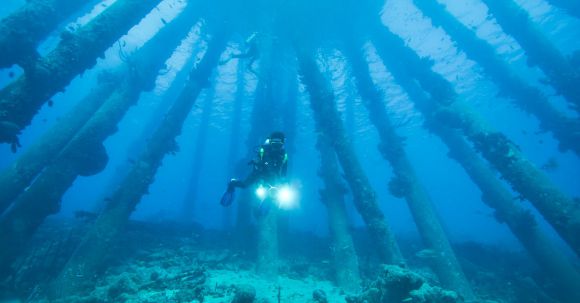When it comes to scuba diving, having a reliable dive watch is essential for accurate dive planning and timing. A dive watch not only helps divers keep track of their time underwater, but it also provides important information such as depth and decompression limits. With so many dive watches on the market, finding the ideal one can be a daunting task. In this article, we will explore the key features to look for in a dive watch to ensure it meets your needs for dive planning and timing.
Water Resistance
The first and most important feature to consider in a dive watch is its water resistance. A good dive watch should have a minimum water resistance rating of 200 meters (660 feet), which is the recommended depth rating for recreational scuba diving. This ensures that the watch can withstand the pressure at the depths you will be diving and prevents water from entering the watch.
Clear and Legible Display
A dive watch should have a clear and legible display so that you can easily read the time and other information underwater. Look for a watch with a high-contrast dial and large, luminous hour markers and hands. This will ensure that you can read the time even in low-light conditions. Some dive watches also have a rotating bezel with minute markings, which can be used to time your dives and decompression stops.
Automatic Movement
An automatic movement is another important feature to consider in a dive watch. Unlike quartz watches, which rely on a battery, automatic watches are powered by the movement of your wrist. This means that as long as you wear the watch regularly, it will stay wound and keep accurate time. Automatic movements are also known for their durability and longevity, making them ideal for dive watches.
Helium Escape Valve
If you plan on doing deep or saturation diving, a dive watch with a helium escape valve can be a valuable feature. During extended periods of time spent in a diving bell or decompression chamber, helium molecules can infiltrate the watch. When divers resurface, the pressure changes can cause the watch crystal to pop off. A helium escape valve allows the helium to safely escape from the watch, preventing any damage.
Dive Log Functionality
Some dive watches come with dive log functionality, allowing you to record important information about your dives. This can include details such as dive time, maximum depth, water temperature, and even the type of marine life you encountered. Having this information readily available on your wrist can be helpful for dive planning and tracking your diving progress over time.
Durability and Construction
Lastly, consider the durability and construction of the dive watch. Look for watches made from high-quality materials such as stainless steel or titanium, which are resistant to corrosion and can withstand the harsh conditions of diving. Additionally, ensure that the watch has a scratch-resistant crystal, preferably made from sapphire or mineral glass, to protect the dial from accidental damage.
In conclusion, when looking for the ideal dive watch for dive planning and timing, it is important to consider features such as water resistance, clear and legible display, automatic movement, helium escape valve, dive log functionality, and durability. By choosing a dive watch that meets these criteria, you can ensure that you have a reliable timepiece that will enhance your diving experience and provide you with the necessary information for safe and enjoyable dives.





